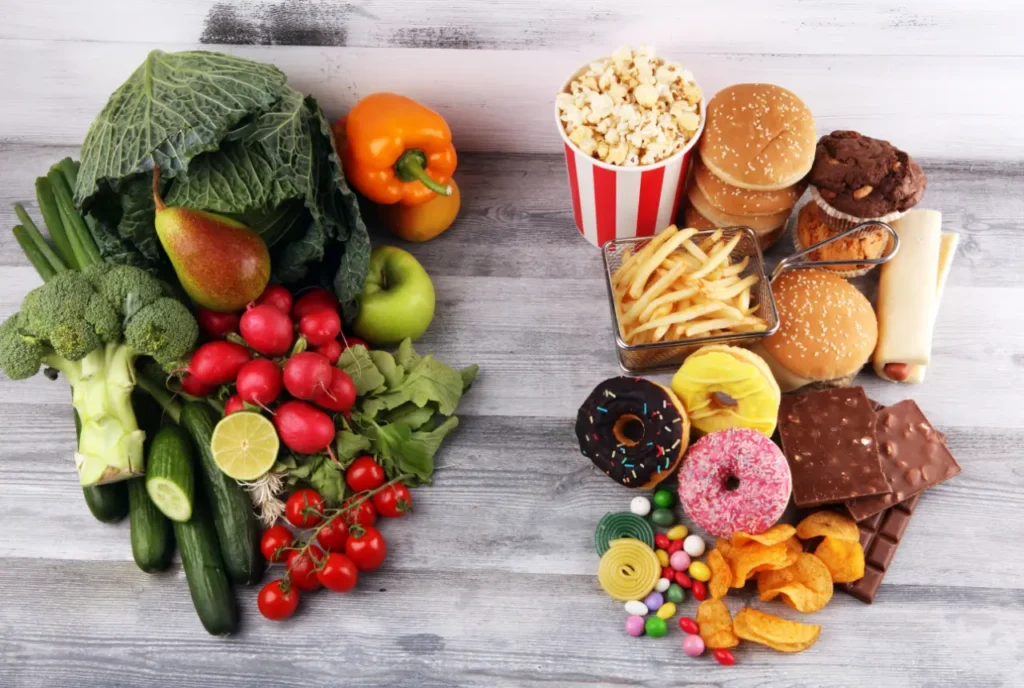How to Quit Bad Eating with 7 Astonishing Tips for Success?
Ever so often, don’t you think that you just really want to go and grab that packet of chips, knowing very well you shouldn’t, but you can’t stop yourself?
Or perhaps that overnight binge when you told yourself you were better than that, but after it all had passed through, you felt terrible. If you continue through this cycle, then know you’re not alone. Bad eating habits plague many; the emotional strain on your inner self is just as trying.
But here is the good part: you can break free from this pattern. Imagine quitting bad eating for good and embracing a healthier, more mindful way of nourishing yourself. Sounds impossible?
Well, stick around because I’m going to share 7 astonishing tips that’ll help you kick bad eating habits to the curb. From mindful eating to simple food swaps, these tips will leave you fully empowered and in the right control over your food intake once and for all.
How to Quit Bad Eating: Understanding the Core Issues
Before we jump into solutions, let’s get clear on what “bad eating” really means. For most of us, it is not simply overeating. Bad eating may manifest itself in the form of emotional eating or addiction to junk food or even recurrently consuming processed foods that do more damage than good.
Why do these habits form? Our relationship with food is so intricate-the relating to emotions, social scenarios, and even stress. It offers solace. Most of us turn to comfort foods in order to reverse such feelings of anxiety, loneliness, or sadness.
In addition to this, mass-produced consumables laced with sugars, fats, and artificial ingredients, induce dopamine storms in the human brain which are nearly impossible to resist. And at this point starts the whirlpool of craving and indulgence.
But here’s the thing: if you figure out what is causing the undesirable eating habits, then you can’t really get around it. Emotional triggers, boredom, or stress; or perhaps even celebration may all push us down the bad eating route. Now that you know what causes undesirable eating in you, you can start replacing this habit with healthy ones.
7 Astonishing Tips for Success in Quitting Bad Eating
Let’s face it; quitting bad eating is not a cakewalk. However, with some actionable strategies, you can not just quit bad eating but also go ahead to develop lifetime healthy eating habits. Here’s how to do so:
1. Track Your Eating Habits for Awareness

You can’t change what you can’t track. A first step toward quitting bad eating behaviors is becoming more aware of your intake and when. Use that food journal or one of those apps to start tracking your meals, snacks, and even the emotion behind that craving. You’d be surprised how much mindless snacking flies under the radar unless you pen it down!
Apps such as MyFitnessPal and Cronometer update their information with 2024 studies you can track every meal and find patterns you likely missed. But in doing so, you gain an awareness of your choices, causing you to want to make better ones. And a little bit of tracking goes a long way toward accountability, which is key for breaking free from unhealthy eating patterns.
2. Replace Unhealthy Foods with Nutritious Alternatives

Do not take little swaps lightly. Most people think quitting bad eating has to be cold turkey. One starts by swapping unhealthy snacks with something a little healthier, such as a handful of almonds or an apple instead of chips. The refined carbs from white bread need to be replaced with whole grains such as quinoa or brown rice.
Planning ahead for this case will really matter. Wholesome options will then seem easy to munch on once you open your refrigerator and see them lying there. As a result, it becomes much easier to forego junk foods once healthy options litter your refrigerators. Prepare for days ahead to avoid consumption of junk foods when hunger pangs are worst. Trending today in 2024 is the whole food movement, getting people to take in more plant-based and minimally processed food products. You will feel much better if you introduce all these into your diet.
3. Practice Mindful Eating to Control Cravings

Do you ever find yourself sucking down a bag of snacks without even noticing that it’s happening? That is where mindful eating comes in. Mindful eating is simply teaching you how to be present at the moment you are consuming anything to mouth—but truly tasting what you’re putting into your mouth; chewing slowly so you can truly feel and taste your food. This slows down the amount of time over which you’ll eat your meal and also provides more opportunities for your brain to notice when you’re full, so it doesn’t eat too much.
New research has come in, showing just how unconscious behavior-busting eating mindfully can be. It is the one thing that might make you less likely to eat emotionally and less likely to get into a head of steam about impulsive snacking. The more you know about your food experience, the less you want junky little snackables. And it’s associated with long-term weight loss-works like a miracle!
4. Build a Balanced Diet that Supports Your Goals
All bodies differ, but a good function of the body is guaranteed with balanced nutrition. Plentiful proteins, good fats, and carbohydrates should be a part of every diet to stabilize hunger and keep the energy level up. If the body is well nourished, you are less likely to give into bad snacking habits.
Creating a balanced meal plan that supports goals is the backbone of a healthy eating routine. Work on controlling portions and making sure you have enough nutrient-dense food sources: lean proteins, whole grains, and numerous vegetables. You will not only feel satisfied but in the long run, this will help to achieve the health goals at hand.
5. Set Realistic Goals and Reward Progress
When you set a goal to stop eating badly, it is about going one step at a time. Start by being small. One easy goal could be reducing your soda consumption, reducing your processed snacks, and so on. Set new goals as you reach those. Most importantly, give yourself credit along the way. So much positive reinforcement will keep the motivation alive.
Well, rewards don’t necessarily have to be food-based; they should not be food-based. Let’s say at certain stages, reward yourself with a new book a day out, or some kind of relaxing spa session. They will drive you and keep you on the right path while preventing falling back into unhealthy eating behavior.
6. Break the Cycle of Emotional Eating

Emotionally eating is the toughest bad eating habit to overcome, as it happens whether you feel stressed or sad, or just bored with life. Fortunately, it’s perfectly possible to handle the emotions rather than the food.
Try journaling about your feelings, meditation, or talking to a friend when you feel like eating out of emotions. Another great resource is the support of therapy or a support group. As of 2024, there are many resources that are available online and in person for those trying to overcome emotional eating.
7. Stay Hydrated and Satisfy Hunger with Water

You probably did not know that thirst most of the times disguised itself as hunger. Hence, people end up taking in more calories than what is expected. Drinking water would literally be the simplest means of managing hunger and a way of avoiding overeating.
Another is through drinking water before meals, which is one way to cut down calorie intake. New guidelines for health purposes also recommend setting a goal of drinking around 8 glasses of water a day, or more depending on your energy levels, to keep hydrated and fight off cravings. You can keep a bottle of water handy with you at all times to minimize unnecessary snacking.
Maintaining a Healthy Eating Routine for Long-Term Success
A healthy relationship with eating is about creating long-term habits, not about diets that severely limit foods or a ‘quick fix.’ Here’s how you can do it:
- Avoid restrictive diets: Instead of cutting out entire food groups, focus on balance and moderation. Restrictive diets are hard to maintain and usually end in bingeing.
- You will make meal planning top priority: Take your time every week to prepare meals. This helps eradicate habit-based eating and is sure to have healthy options when you require them.
- Be mindful of what you eat: Eat slowly, enjoy your meals, and have respect for the hunger signs in your body. This will always keep you from overeating, keeping you in line with what your body needs.
- Meal preparation in large quantities: You can save significant amounts of time, and always have healthy meals ready for every week. This is great for avoiding unhealthy or processed products.
- Smart grocery lists: Plan your grocery shopping around balanced meals. That means whole grains, lean proteins, fresh fruits, and vegetables would keep you on track with your healthy eating goals.
Conclusion
Breaking free from bad eating habits isn’t so easy, but it is very much possible with the right approach. With these 7 amazing tips to follow, track what you eat, swap unhealthy snacks with healthy ones, learn mindful eating, and more.
You can develop a healthy approach toward food and quit all that bad eating for good. Remember that consistency breeds change that lasts, and that does indeed take some time. And from here, you can start small, be patient with yourself, and before you know it, you are well on your way to healthier, happier eating!


